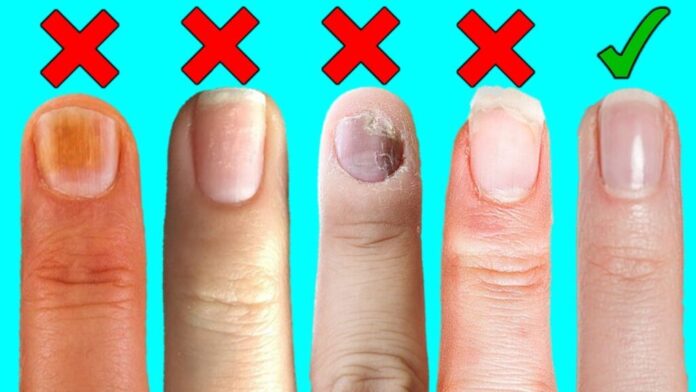Nail health is most often an indicator of underlying medical conditions. Healthy nails are considered smooth and free of discoloration, but if you have observed something odd with the texture and/or color of your nails, there may be something more serious than you think. In this article, we’ll be discussing the different signs your nails are showing and what they can possibly mean.
Soft or weak nails
If your nails tend to break or bend before breaking. Soft nails can be caused by overexposure to moisture or chemicals such as cleansers, cleaners, nail conditioners, and nail polish removers. Having soft or weak nails could also indicate that you have vitamin B, calcium, iron, or fatty acid deficiency. Try to avoid touching harsh chemicals with your bare hands. Also, take multivitamins with calcium and vitamin B to prevent further damage.
Brittle nails
Nails that are rough and splitting are also prone to cracking, and it’s one of the most common nail problems. Onychoschizia is the scientific term for brittle nails, this is usually caused by repeated drying and wetting of the nails. For some people, it could also be a sign of hypothyroidism or deficiency of iron. If you have brittle nails, gloves should be worn when you’re planning to get your hands wet, such as when washing dishes or doing laundry. You can also try using lotions or creams that contain alpha-hydroxy acids.
Ridges on fingernails
Vertical ridges usually appear later in life and extend from the tip of the nail to the cuticle. They do usually not cause any danger to your health, as long as they are not accompanied by other symptoms, such as color changes. If you see horizontal ridges on your nails, it’s very different. It may be a sign of kidney disease or other possible underlying conditions. To remove vertical lines, you can simply buffer your nail to make it smooth again. If you have horizontal lines, it’s better to have a check-up with your doctor right away.
Peeling
Peeling the skin at the sides of your nails is most likely caused by external trauma to the nail itself such as using the nail as a tool, pressing the nail too tightly, or removing nail polish with pressure. Nails can also peel if you soak your hands in soapy water for too long. Try to apply lotion to keep nails moist after any activity that can dry out the nails.
Yellowish nails
If you have yellow nails, it is usually caused by either an infection or a reaction from a chemical or product like nail polish. In some cases, it could also be a sign of psoriasis or diabetes. If it is a reaction from a product, all you have to do is to let it grow out as your new nails will be clear again. You can also use natural remedies like tea tree oil and take vitamins A and E to help treat infections.
No half-moons
If you don’t see half-moons on your nails, most of the time it isn’t serious. But if it suddenly disappears, it could indicate that you might have malnutrition, depression, or anemia. It’s better to ask a healthcare professional for guidance and help on what this could mean.











